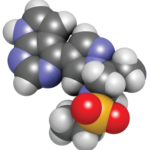 What Are the Therapeutic Alternatives When a Janus Kinase Inhibitor Fails to Work?
What Are the Therapeutic Alternatives When a Janus Kinase Inhibitor Fails to Work?
SAN DIEGO—Treatment alternatives after Janus kinase (JAK) inhibitor failure in real-life conditions were analyzed and presented at ACR Convergence 2023 by Pablo Francisco Muñoz Martínez, a rheumatologist at the Hospital Universitario y Politécnico La Fe, Sagunto, Spain.1
JAK inhibitors are newer, targeted disease-modifying anti-rheumatic drugs (DMARDs) being used for immune-mediated diseases, such as rheumatoid arthritis (RA), psoriatic arthritis and axial spondyloarthritis. The first JAK inhibitor approved in the U.S. was tofacitinib (Xeljanz) for the treatment of RA.2 Subsequent approvals included baricitinib (Olumiant), and upadacitinib (Rinvoq). Filgotinib, another JAK inhibitor, is not approved in the U.S. This class of medications included the first oral agents to have comparable effectiveness to biological DMARDs (bDMARDs), hence their popularity in managing patients.
JAK inhibitors are not without risk. They carry an increased risk of infection and may increase the risk of malignancy, venous thromboembolism and major cardiovascular events.3
The authors of this presentation agree that the evidence supporting therapeutic alternatives in real life after a JAK inhibitor fails to help a patient is limited. Should one use another JAK inhibitor or change to an entirely different agent with a different therapeutic target?
Methods
This was a retrospective, longitudinal, observational study of patients who had started taking a JAK inhibitor but had discontinued that treatment between 2013 and 2022. The patients’ electronic medical records were used to obtain demographic information and clinical variable information.
After the JAK inhibitor was stopped, patterns of switching and cycling the prescribed medication—classified by drug targets: anti-tumor necrosis factor (TNF), anti-interleukin (IL) 6, anti- cytotoxic T-lymphocyte associated protein 4 (CTLA4), anti-IL-12/23, anti-IL-17, anti-IL-23, another JAK inhibitor or another mechanism, such as anti-CD20—were analyzed. The retention rate at nine months following the start of the new treatment was evaluated.
Results
In this analysis, the most commonly prescribed JAK inhibitor was tofacitinib (n=119), followed by baricitinib (n=76), upadacitinib (n=66) and filgotinib (n=4). The most common indications for JAK inhibitor treatment were RA (n=71) and psoriatic arthritis (n=12).
A total of 265 JAK inhibitor prescriptions with 95 JAK inhibitor treatment failures were included. Tofacitinib had the highest failure rate (n=61) of the JAK inhibitors, followed by baricitinib (n=22) and upadacitinib (n=12). There was not enough data to evaluate the failure rate of filgotinib because it had only recently been approved for use in the Spanish market.

